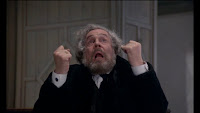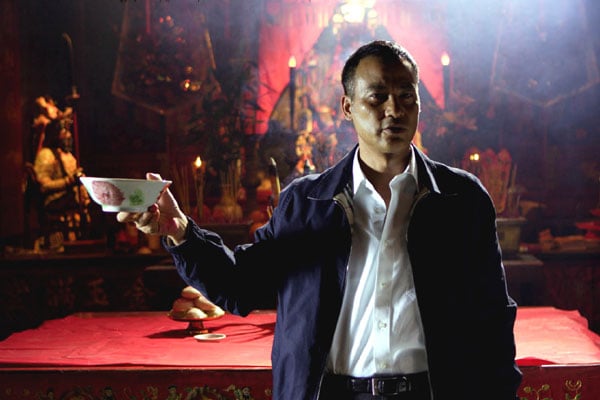


Each new film by Philippe Garrel tends to be greeted as a summit, a distillation, a synthesis … and sometimes an impasse. This points to a simple and obvious fact: that the same character types, situations, experiences, motifs and issues tend to come around time and again, identifiable as the next chapter of the same, ever-expanding auto-portrait roman.
Devotees of his work become tenderly familiar with these representations of the auteur’s life-story: his artisticall y-minded parents (including actor-father Maurice Garrel); his precocious beginnings as a teenage filmmaker; the heady involvement at the barricades in 1968; his meeting with the Velvet Underground chanteuse Nico, and their slide into drug addiction during the 1970s; his period of making silent, lush, mytho-poetic avant-garde portrait-films of faces in exotic landscapes; his descent into madness and the painful experience of electro-shock therapy; his crawl back to artistic productivity and his negotiation of narrative cinema; his circle of friends (painters, writers, actors, filmmakers) from the ‘Zanzibar’ group to the present-day; the break-up of his marriage to Brigitte Sy, the birth and growth of his son, Louis Garrel, and the other, more mysterious women who were fleeting lovers, girlfriends, mistresses …
But even this aspect of Garrel’s work is less ‘first person cinema’ than something more collective – a ‘family romance’ based on ages, generations, transmissions. Liberté, la nuit (1984) is Garrel’s imaginative projection about the generation of his father at a previous younger moment – the moment when the father becomes the son’s mirror or double. Le Cœur fantôme (1986) imagines the father’s death, its real and symbolic consequences. La Naissance de l’amour (1993) begins the director’s reflection on the agonised assumption of his own parenthood – will he merely repeat the irresponsible, wayward sins of the father? And Les Amants reguliérs (2005) brings everything to a peak in its three-way dinner table scene of son-playing-father (Louis Garrel), ex-wife (Brigitte Sy, Louis’ mother) playing his own mother, and Maurice Garrel as now the somewhat dotty but hypnotically appealing grandfather.
Garrel’s ingenious casting adds another layer of complexity to this perpetual re-invention of self: what sort of alter ego is this, that can be played successively by Henri de Maublanc (L’Enfant secret, 1982), Benoit Regent (J’entends plus la guitare, 1991), Lou Castel (La Naissance de l’amour), Luis Rego (Le Cœur fantôme), Mehdi Belhaj Kacem (Sauvage innocence, 2001) and his own son? In Le Vent de la nuit (1998), Garrel splits his characteristic alter ego in two: he is both the callow, young man (Xavier Beauvois) involved with a wealthy, suicidal hysteric (Catherine Deneuve) – a displaced representation of Jean Seberg in the ‘70s – and the older, wiser, silent, ruggedly good-looking man (Daniel Duval) melancholically recalling his past. In this film, Garrel takes his autobiographical fancy to a new and shocking conclusion: he contemplates his own death by suicide, an intensely ethical as well as existential act, in the shadow of Jean Eustache and Guy Debord … Yet, after arriving at this grim plateau, there is a rebirth through an immersion in youth: Sauvage innocence (a very free variation on the Nico story he has obsessively retold since L’Enfant secret), and especially Les Amants reguliérs, where at last the great myth of origin underlying the entire Garrel œuvre is at last revealed, recreated and directly depicted: 1968 … And now the paranoia, the sense of being an eternal outsider to society, the fragility of sanity and the anxiety of ever ‘holding onto a glorious moment’, all this suddenly make perfect sense in the light of that momentous origin in a divided Paris that resembles nothing so much as Bosnian war zone.
Like Tsai Ming-liang, Garrel creates his own, distinctive, poetic universe from the repetition of and stylisation of select details from everyday life. I have the overwhelming sense, when I experience a film by Garrel, that I am witnessing the birth, or the rebirth, of the cinematic medium itself – as in José Luis Guerin, a rediscovery of the primal, ‘virgin’ image from the first films by Lumière. So let us begin an inventory of the elements of Garrelian poetics. Windows, for instance, and the view beyond a window to a passing street scene. Doors (so crucial also to Bergman and Bresson): closed doors about to be opened, half-shut doors hinging us between different characters, spaces and events. Walking: individuals, couples, groups of friends walking down a street, towards or away from the camera, like in a silent movie . Rain falling, its drops accumulating and sliding on a glass surface, like the window of a room, or a car. And hands, in close-up insert, feeling their way, touching the hand or face or hair of another …
Garrel’s films have a characteristically austere, severe, minimalistic appearance. This is because walls, rooms and streets form a perfectly self-enclosed architectural imaginary. All European cities seem the same. The interior walls are always bare, featureless. All apartments look the same, as do all cafés: Garrel rarely plays on the class differences of his characters in terms of their environment, or on the visible vicissitudes of their ‘social mobility’ (as in Truffaut or Téchiné), preferring to subject them all, equally, to the same austerity. The Garrelian living space is dominated by bedrooms; by bathrooms, which we sometimes glimpse in moments of unexpected intimacy; and by bits of kitchens – sinks and chopping boards, with very occasionally some half-hearted eating. (Unlike Chabrol or Renoir, Garrel’s cinema is not one of hearty ingestion.) Streets provide the passageways between domestic living spaces and hotel rooms (in which amorous assignations occur) – and these hotel rooms, too, all look the same. In that passage through the streets, certain fixtures and stopovers also regularly recur: the entrances and exits to métro stations (the unforgettable, ‘lightweight’ final moments of La Naissance de l’amour); spots for embarking and disembarking from cabs; and a range of service points – tabacs, hardware shops, florists, chemists, bookstores (there is, however, nothing so modern as a video, DVD or even CD shop). Outside this city beat, there the trips, the holidays by train to country in Les Baisers de secours (1989) and Le Cœur fantôme, the car ride to Italy and back in La Naissance de l’amour, and the extended voyage to Berlin in La Vent de la nuit.
Phone calls are invariably dramatic events in Garrel’s films. In the short Rue Fontaine (1984), Rene (Jean-Pierre Léaud) busts into the domestic life of his lover by way of a downstairs phone, begging to see her. In La Naissance de l’amour, Paul is called to the phone after his night spent away from home, in order to be reprimanded by his surly, teenage son. In Le Cœur fantôme, the life of a painter, Philippe (Luis Rego), is torn apart by the call that alerts to his father’s internment in hospital. And in J’entends plus la guitare, a phone call from Marianne (Johanna ter Steege) is so unsettling in its effect on a family home that Aline (Brigitte Sy) hears a premonitory, phantom, virtual noise just before the actual phone-ring.
Every great, distinctive filmmaker can be characterised by the way he or she handles the passage from day to night. Some directors (like Godard) destroy even the faintest sense of a normal day-night progression. For Garrel (as for Akerman), however, day and night are the fundamental poles of a poetic logic. In La Naissance de l’amour, day and night are mapped onto places, onto types of characters, onto types of images, and even onto types of bodies. Paul’s wife, Fauchon (Marie-Paule Laval), is seen in the overexposed white of kitchen or hospital; his lover, known only as ‘the young girl’ (Aurélia Alcais) is mostly seen in night streets.
Back in the bedrooms, there is sleep. Garrel is a poet of sleep to rival, even surpass, Murnau. From its first moments, Les Amants reguliérs shows us its characters supine, laid out on couches or on the floor, relaxed as they suck on the opium pipe. Among his silent, abstract, experimental portrait-films of the 1970s, Les Hautes solitudes with Jean Seberg concentrates mainly on the Warholian spectacle of sleep – because what event could pose for us, more acutely, the ‘paradox of the actor’, whether he/she is ‘performing’ or simply ‘being’? There are two types of sleeper in Garrel’s films: dead sleepers, and light sleepers. Dead sleepers zone out, escape all torment and misery for those blessed moments of sheer unconsciousness. Light sleepers are those disturbed souls who suffer every kind of night terror – and perhaps the single most terrifying sight in any Garrel film is the glimpse of a child who cannot sleep. Garrelian sleep is the gateway to death – its prefiguration, for death, as Les Amants réguliers calls it, is the “sleep of the just” – and to the realm of dreams. We should never overlook Garrel’s attachment to Surrealism: dream sequences appear prominently in Le Cœur fantôme, Rue Fontaine, La Naissance de l’amour, Sauvage innocence and Elle passé tant d’heures sous les sunlights (1986).
Garrel often films encounters and partings, hellos and goodbyes. The difficult, melancholic endings of affairs are balanced by the tremendous élan of the first glance, the first words, the first touch. Indeed, in Garrel’s cinema, love is always the same, always a repetition, and yet it is always new – because, as Leonard Cohen sang, “Everyone to love must come / but like a refugee”.
© Adrian Martin March 2006

























